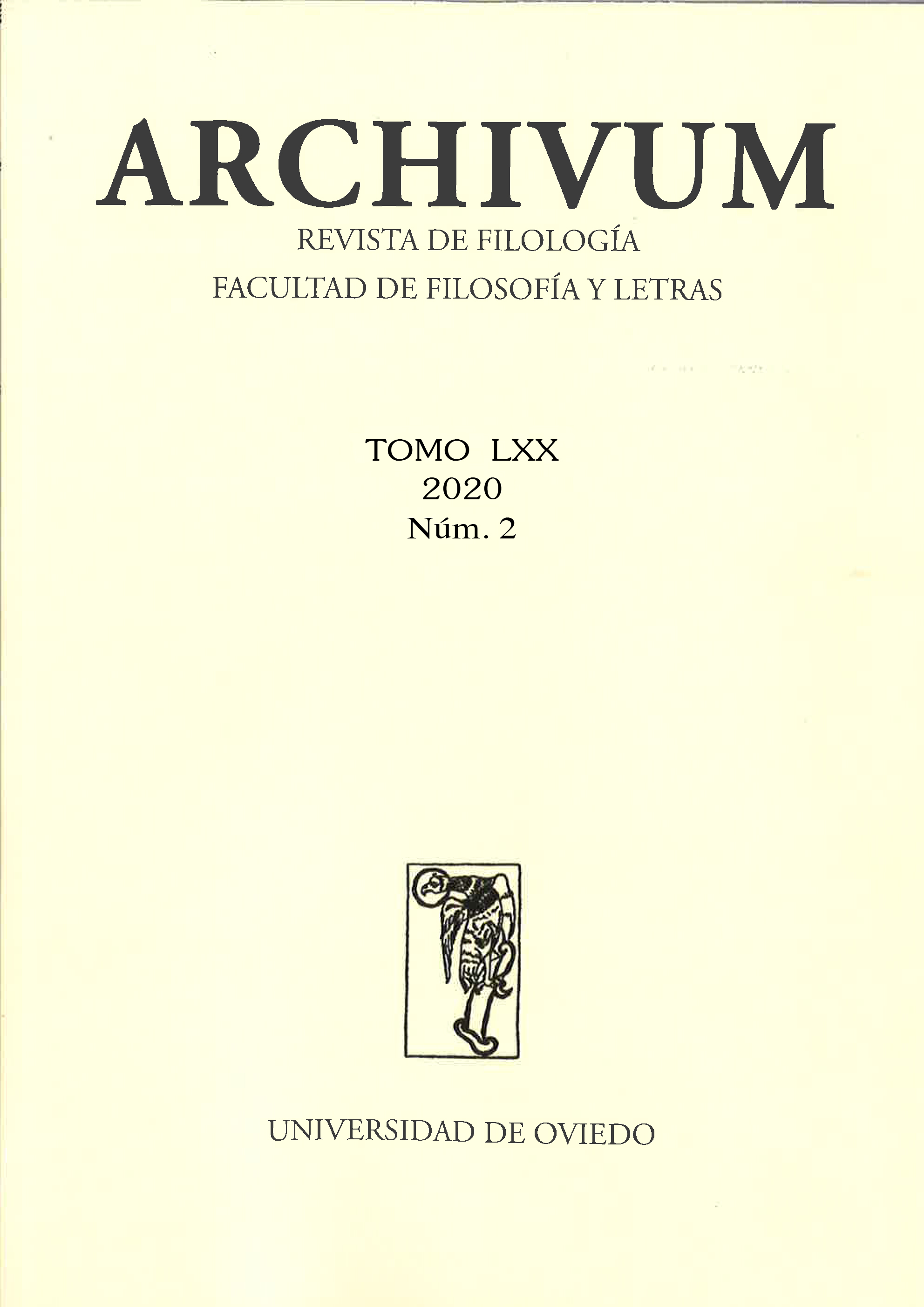Resume
Este trabajo examina textos autobiográficos escritos por supervivientes de los campos de concentración nazis con el objetivo de explorar la metaforización de los animales como medio para transmitir el sufrimiento de los autores. Los autores estudiados
emigraron a Estados Unidos después de la guerra y eligieron significativamente el
inglés, una lengua extranjera, para relatar la experiencia traumática, una tarea indudablemente difícil. Puesto que la discusión académica sobre el Holocausto se desarrolla
principalmente en un marco anglófono, es vital que prestemos atención a las memorias
redactadas originalmente en inglés, y que escuchemos las palabras genuinas de los
supervivientes, en vez de confiar únicamente en traducciones. Sugiero que la metáfora animal les permite superar de alguna manera la inefabilidad inherente a todas
las memorias del Holocausto. Además, al explorar estas imágenes es posible indagar
sobre sus actitudes personales respecto a otras especies, ya que los autores a menudo se
identifican y simpatizan con el sufrimiento animal. Mi propósito es, por tanto, decidir
si este recurso retórico apunta a la aparición de una empatía entre especies, basada en
la capacidad compartida de sufrir.
Referencies bibliográfiques
Anderson, R. et al. (2016) “Orca Behavior and Subsequent Aggression Associated with Oceanarium Confinement”, Animals, 6(8), 49.
Adorno, T. (1963) “Kulturkritik und Gesellschaft”, in Tiedemann, R. (ed.), Prismen: Kulturkritik und Gesellschaft, München, DTV, 7-26.
Arendt, H. (1963) Eichmann in Jerusalem, New York, The Viking Press.
Aub, M. (1999) Manuscrito cuervo, Segorbe, fundación Max Aub.
Augustyn, P. (2018) “Animal Studies in the Language Sciences”, Biosemiotics: A New Understanding of Life, 11, 121-138.
Bitton-Jackson, L. (1997) I Have Lived a Thousand Years, New York, Simon & Schuster.
Bradshaw, G. A. et al. (2009) “Avian Affective Dysregulation: Psychiatric Models and Treatment for Parrots in Captivity”, Proceedings of the Association of Avian Veterinarians, 28th Annual Conference, Minnesota.
Chomsky, N. (2009) Cartesian Linguistics, Cambridge, Cambridge University Press.
Cole, L. (2016) Imperfect Creatures: Vermin, Literature, and the Sciences of Life, 1600–1740, Ann Arbor, University of Michigan Press.
Coetzee, J. M. (1999) The Lives of Animals, New Jersey, Princeton University Press.
Copeland, M. (2012) “Literary Animal Studies in 2012: Where We Are, Where We Are Going”, Anthrozoos, 25, 91-105.
Drix, S. (1994) Witness to Annihilation: Surviving the Holocaust, New Jersey, Brassey’s.
Fögen, T. (2014) “Animal Communication”, in Campbell, G. L. (ed.), The Oxford Handbook of Animals in Classical Thought, Oxford, Oxford University Press, 1-18.
Geve, T. (1987) Guns and Barbed Wire: A Child Survives the Holocaust, Chicago, Academy Chicago Publishers.
Jacobs, B. (1995) The Dentist of Auschwitz: A Memoir, Kentucky, The University of Kentucky Press.
Kogon, E. (1974) Der SS-Staat: Das System der deutschen Konzentrationslager, München, Kindler.
Lasker-Wallfisch, A. (2000) Inherit the Truth: A Memoir of Survival and the Holocaust, New York, Thomas Dunne Books.
Lengyel, O. (1995) Five Chimneys: A Woman Survivor’s True Story of Auschwitz, Chicago, Academy Chicago Publishers.
Lévinas, E. (1976) Difficult Freedom, Baltimore, Johns Hopkins University Press.
Levi, P. (1989) Los hundidos y los salvados, Barcelona, Muchnik.
Magyar-Isaacson, J. (1990) Seed of Sarah: Memoirs of a Survivor, Chicago, University of Illinois Press.
Parrau, A. (1995) Écrire les camps, Paris, Belin.
Pető, A. et al. (eds.) (2015) Women and the Holocaust: New Perspectives and Challenges, Warszawa, Central European University Press.
Robin, K. & Long, J. (2011) “Animal Metaphors and Metaphorizing Animals: An Integrated Literary, Cognitive, and Evolutionary Analysis of Making and Partaking of Stories”, Evo Edu Outreach, 4, 52-63.
Sanfilippo, M. (2016) “Liana Millu e Charlotte Delbo: scrivere e riscrivere la memoria”, Quaderns de Filologia. Estudis Literaris, 21, 173-189.
Sax, B. (2015) “Holocaust Images and Other Powerful Ambiguities in the Debates on Animal Experimentation: Further Thoughts”, Anthrozoös, 6, 108-114.
Seligman, M. (1972) “Learned Helplessness”, Annual Review of Medicine, 23, 407-414.
Seliner, E. C. (2019) Our Dog Red: A Small Token of Remembrance, Oregon, Resource Publications.
Singer, P. (1975) Animal Liberation: A New Ethics for Our Treatment of Animals, New York, HarperCollins.
Spiegel, M. (1996) The Dreaded Comparison: Human and Animal Slavery, New York, Mirror Books.
Spiegelman, A. (2003) Maus: A Survivor’s Story. New York: Penguin.
Sztybel, D. (2006) “Can the Treatment of Animals Be Compared to the Holocaust?”, Ethics and the Environment, 11(1), 97-132.
Taszak, J. (2009) “Other/Otherness”, in Kitchin, R. & Thrift, N. (eds.), International Encyclopedia of Human Geography, Oxford, Elsevier Science, 3-7.
Tydor Baumel, J. (1998) Double Jeopardy: Gender and the Holocaust, London/New York, Routledge.
Tryuk, M. (2010) “Interpreting in Nazi Concentration Camps during World War II”, Interpreting, 12(2), 125-145.
Tuvel Bernstein, S. (1997) The Seamstress: A Memoir of Survival, New York, G. P. Putnam’s Sons.
Waldau, P. (2013) Animal Studies: An Introduction, Oxford, Oxford University Press.
Webber, M. (2011) “Metaphorizing the Holocaust: The Ethics of Comparison”, Images: The International Journal of European Film, Performing Arts and Audiovisual Communication, 8(15), 1-30.

Esta obra ta baxo una llicencia internacional Creative Commons Reconocencia-NonComercial-EnsinDerivaes 4.0.
Derechos d'autor (c) 2021 Archivum

